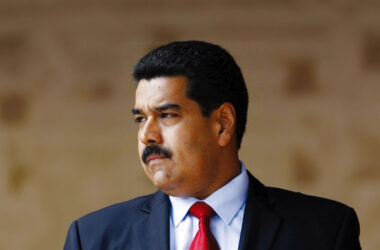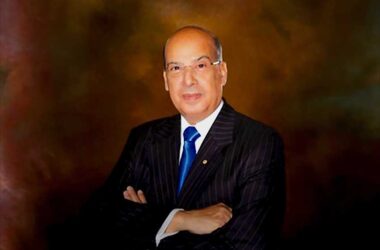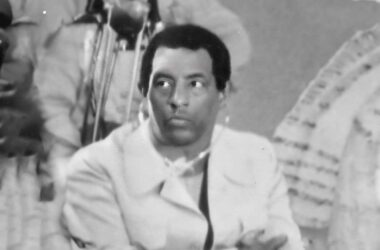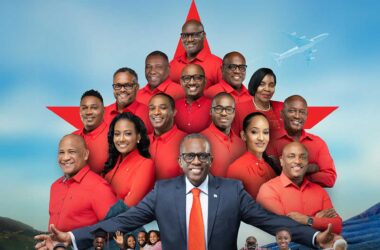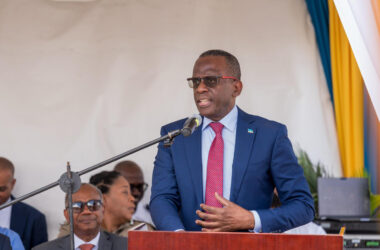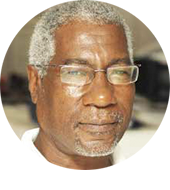
When I first joined the Crusader on April 1, 1976, I was a member of a small progressive political grouping called the Workers Revolutionary Movement (WRM), which produced a newsletter called ‘Tambu’, circulated mainly among workers through their trade unions, at various public and private workplaces island-wide, as well as among youth and students.
The WRM was one of many pro-socialist, anti-capitalist, anti-imperialist and revolutionary-oriented political entities across the Caribbean at the time, developed from the Black Power era of the 1970s, but also influenced by the success of the Cuban Revolution.
The ‘left’ parties and movements also produced national publications, including: ‘Freedom’ by the Youlou Liberation Movement (YULIMO) in St. Vincent and the Grenadines, ‘Jewel’ by Grenada’s New Jewel Movement (NJM), ‘Struggle’ by Jamaica’s Workers Liberation League (WLL), ‘Mirror’ by Guyana’s People’s Progressive Party (PPP) – and several others.
Those were not your everyday newspapers, but instead targeted specific demographics, highlighting the economic struggles facing workers, farmers and agricultural labourers nationally.
‘Tambu’ and The Crusader were doing the same at different national partisan political levels, but ‘Tambu’ became a weekly staple looked forward to by a growing list of always-eager readers island-wide.
The Crusader and THE VOICE were the major printed platforms reflecting between them the partisan struggles between those who supported the thinking and politics of the United Workers Party (UWP) and the Saint Lucia Labour Party (SLP).
Odlum and The Crusader had been chronicling the chronicles of Saint Lucia’s struggles from the day Odum acquired the publication (with the help of Tom Walcott primarily) from John H. Pilgrim, an earlier journalism pioneer and local publisher associated with the birth of the West Indies Labour Parties and the movement for a Federation of the West Indies.
Under ‘Brother George’ the Crusader became a beacon of hope that galvanized readers every weekend, highlighting and exposing negative aspects of UWP rule under successive administrations.
As the General Secretary of the WRM and Editor of The Crusader, my relationship with ‘Brother George’ was always one of mutual respect and agreement, us silently disagreeing on ideological issues, our differences rooted in our contrasting interpretations of ‘socialism’ (his in-bred embrace of ‘Fabian’ Socialism) and his overwhelming aversion to organization.
The differences between WRM’s thinking and that of the SLP’s leadership were highlighted best (and most) in their approaches to Independence.
With General Elections constitutionally due in 1979, the UWP — under serious challenge thanks to Odlum and his flowery but chilling exposures in The Crusader and the agitation by the SLP — made ‘Independence’ a campaign issue from early 1978, including its party symbols among proposed national symbols and even asking the British to grant independence on December 13, 1978 – formerly ‘Discovery Day’ and then called ‘National Day’ (by the UWP administration) even before nationhood.
The SLP – under Odlum and Peter Josie’s leadership – decided to ‘oppose Independence’, simply on the basis that it was being proposed by the UWP.
The WRM, however, felt differently — that Independence should not be opposed simply for opposing sake — and through ‘Tambu’, issued a special pamphlet entitled: ‘Independence – A Necessary Step for National Liberation’.
The WRM earned the expected fire from the SLP’s leaders but maintained that it simply couldn’t (and wouldn’t) oppose independence — on basic progressive political principles.
We felt the progressive approach should have been to use the election campaign to show what independence ought to be and expose why it was only being used as a mask to win an election the UWP knew it would lose without enough of a shining gimmick.
The British government, recognizing there was greater opposition to independence than support (thanks to the SLPs agitation) rejected the proposed December 13, 1978 date and instead chose February 22, 1979 – a date of no local relevance, simply pulled out of a Cork Hat during talks at Westminster.
After a heated campaign that saw Independence Day arrive and observed with the nation irreversibly split and the opposition calling for a national boycott, the flag-raising ceremony was held under restrictive heavy security (for official invitees only) within the walls of the Port Authority’s Castries wharf.
A major fire was also set on Independence Day by inmates at the ‘Royal Gaol’ — the island’s age-old prison on Bridge Street in Castries, also called ‘Her Majesty’s Prison’.
Thereafter, Independence celebrations were regarded more as an annual national dividing factor, with Labour supporters seeing it as a UWP imposition and treating it in an accordingly negative light.
As expected, the UWP’s acrobatic election campaign ‘Jimmyflix’ failed miserably — and less than five months after Independence Day, it lost the 1979 General Elections with a stinging 12-5 majority for the SLP.
The Grenada Revolution (March 13, 1979) came 19 days after the SLP’s victory and the WRM and the Caribbean’s left movement got a very welcome new flag to fly, the brand-new reality of a first genuine armed revolution in the English-speaking Caribbean– and another new cause to support.
With the SLP in office and expectations that it would provide the progressive leadership promised during the 1979 campaign, the WRM (like the rest of the region’s progressive movement) added to its objectives support for and promotion of the Grenada Revolution and seeking to learn from and share its lessons with people across the islands.
Many progressives and revolutionaries from across the Caribbean actually moved to Grenada to offer voluntary skills-sharing solidarity and help build a Caribbean revolution led by a political party of our type, seeking to build the type of society we all proposed.
And just like our publications changed the tune to also sing choruses of praise to the New Grenada, I too temporarily hung my hat at The Crusader and moved there on March 13, 1980.
On March 14, I started my first day as Chief Reporter at the People’s Revolutionary Government’s ‘Free West Indian’ newspaper — and a year later, as News Editor at ‘Radio Free Grenada’.



